One of the pleasures for car-lovers is the sound of the engine and the sound of the exhaust, music to their ears, so to speak. While a loud exhaust sound may be disturbing to some, car enthusiasts equate it with performance, the louder the better. In fact, engine sound was considered important enough that, as cars got quieter, some carmakers developed ‘noise generators’ to boost the sound level for the driver’s pleasure.
With the age of electric cars starting, it is apparent that this pleasurable ‘music’ will vanish and in place of throaty growls are the hum and whizzing of electric motors. In fact, electric cars are so quiet that manufacturers have to put devices to generate warning sounds for pedestrians.
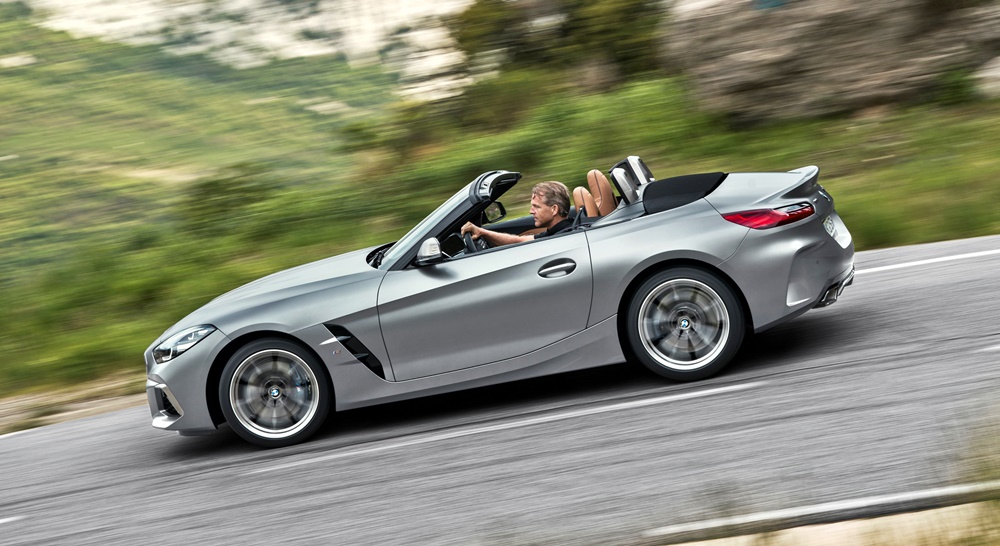
The aural experience
Companies like BMW have long sold their products with the promise of driving pleasure, which includes the aural experience. So electrification of its cars can affect that selling point even if driving dynamics can still be maintained.
So the German carmaker is taking a new approach to this matter and aims to provide an ‘emotionally rich aural experience’ to BMW drivers with BMW IconicSounds Electric. This is a sound portfolio created for BMW models that are electrified – both full electric as well as plug-in hybrids (PHEVS). To oversee the development, they have even created a position of Creative Director Sound at the BMW Group, which is currently held by Renzo Vitale.
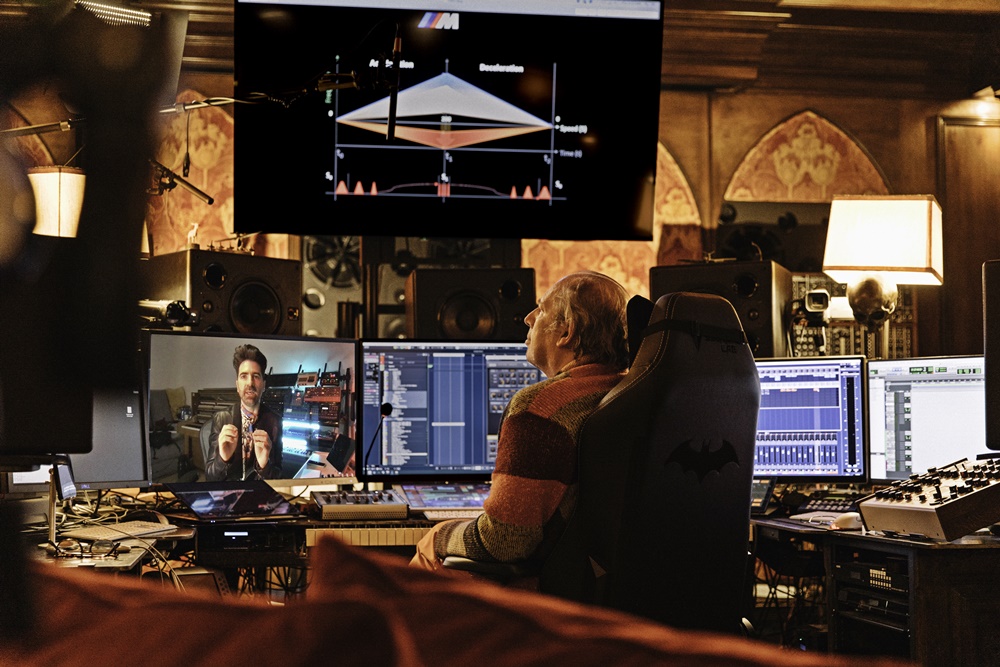
Hans Zimmer creates the sounds
Vitale is collaborating with composer and curator Hans Zimmer (whose award-winning works include The Lion King, Gladiator, the Pirates of the Caribbean series, The Dark Knight Trilogy, Inception and Blade Runner 2049), to produce a distinctive driving sound specially for electric BMW M cars.
“Every BMW has its own character, which is reflected in the sound it makes,” said Zimmer. “So for the electrically driven BMW M models, we have developed a driving sound which accentuates their emotional driving experience particularly vividly and ensures their performance can be felt with even greater intensity.”
The work is a continuation of Zimmer’s association with BMW. Earlier, he was involved in the development of an inspiring ready-to-drive sound for electrically-powered BMWs which instils a sense of excitement at the prospect of electric driving when the START/STOP button is pressed. The latest chapter in this collaboration covers drive sounds for the iX and i4, including a differentiated sound for the M-specification version of the i4.
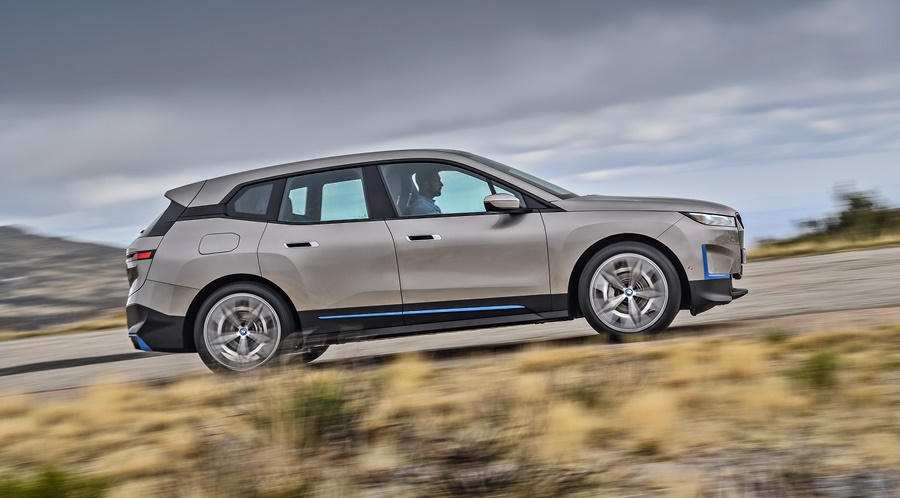
While the hush of electric driving enhances comfort, the driving experience loses a degree of emotionality. This is where BMW IconicSounds Electric steps in to give the experience of ‘Sheer Driving Pleasure’ with all the senses. In the future, electric driving pleasure will be enhanced by acoustic feedback to every movement of the accelerator. Like the on-board driving modes selectable at the touch of a button, the driving sound also takes its cues from the driving situation and the driver’s personal preferences.
Different sound ‘modes’
In the basic setting, BMW IconicSounds Electric employs a strikingly transparent timbre with spherical components to convey the basic character of an electrically powered BMW model. An immersive and pleasant atmosphere is created initially in the i4 in COMFORT mode but when the accelerator pedal is pushed down hard, the direct relationship between how the car is being driven and the sounds it makes changes: the sound experience deepens as load and speed increase.
In SPORT mode, in particular, the car’s aural spectrum is more dominant and powerful, the sound providing a constant ‘commentary’ on the driving situation. Drive system processes are registered within milliseconds and acceleration, load changes or recuperation given a suitable acoustic accompaniment.
Only when the vehicle is travelling in ECO PRO mode is the acoustic feedback reduced to nothing. Here, the silence of the drive system underscores the driver’s decision to adopt an ultra-efficient driving style.
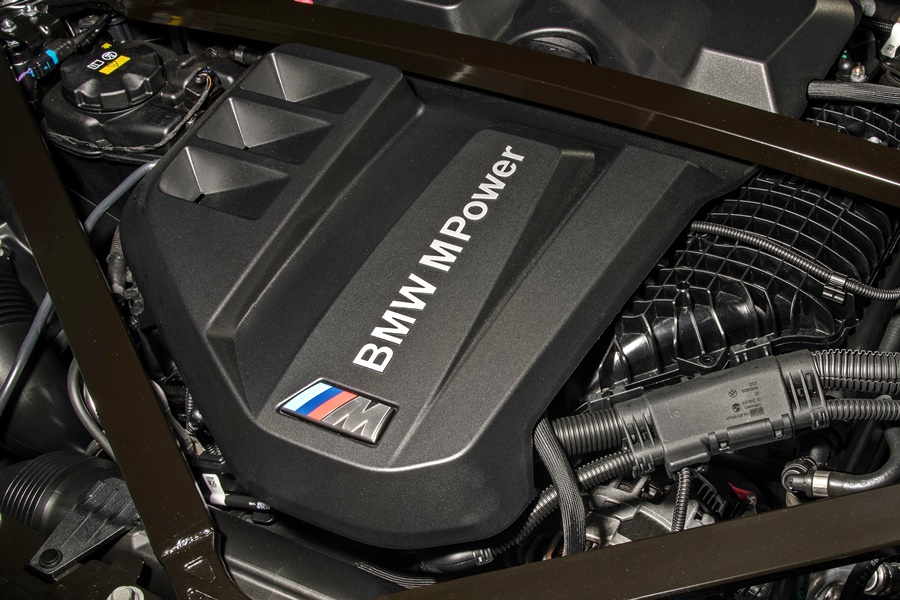
In the version developed specifically for electrified BMW M models, the drive sound is charged with extra energy. Overall, the drive system note displays a less harmonious but engagingly rousing and technical sonic profile. Acceleration sparks a rich intensification of the soundtrack’s development, authentically reflecting the car’s performance character.
“When you press the pedal of an M car, you suddenly get goosebumps all over your body,” said Vitale. “We translated this feeling into a drive sound that expresses a fusion of superior power and flowing energy.”
The new IconicSounds Electric drive sounds are expected to feature in the i4 and iX over the course of 2022. In cars with earlier build dates, the new sounds can be imported retrospectively via Remote Software Upgrade, should the customer wish. The new spectrum includes one ready-to-drive sound and one stop sound, plus a driving sound which will be made available in the relevant version for models.
The Mercedes-Benz EQ brand continues to grow each year with the addition of new all-electric models every year. In time, besides the sedans and SUVs we have already seen, there will be other model types just like the range for models with combustion engines. Next to come will be a small van and its appearance is shown in the Concept EQT.
New T-Class
This is a near-production concept vehicle that will be the first premium vehicle in the small van segment which Mercedes-Benz has designated the new T-Class as its representative. Besides the electric variant, there will also be other variants with combustion powertrains. While this new class has nothing to do with the old ‘T’ models that were stationwagons, it does offer storage versatility.
“We are expanding our portfolio in the small van segment with the forthcoming T-Class. It will appeal to families and all those private customers, whatever their age, who enjoy leisure activities and need a lot of space and maximum variability without forgoing comfort and style. The T-Class provides them with an attractive introduction into the world of Mercedes-Benz. And as the Concept EQT shows, we are consistently implementing our claim to leadership in electromobility and will also be offering a fully electric model in this segment in the future,” said Marcus Breitschwerdt, Head of Mercedes-Benz Vans.
EQ design DNA
The Concept EQT will be immediately recognisable as a member of the Mercedes-EQ family with the characteristic black panel front and LED front headlights that flows seamlessly from the bonnet and gleams with a star pattern. The different-sized stars with a 3D effect are featured throughout the vehicle exterior.
Explaining the design, Gorden Wagener, Chief Design Officer Daimler Group, said the Concept EQT is a new, holistic van with the Design DNA of ‘Sensual Purity’. “Sensuous shapes, elegant trims and sustainable materials show that this van clearly belongs to our Mercedes-EQ family,” he said.
The interior space, which can accommodate 7 persons, is characterised by an elegant contrast of black and white. The seats are upholstered in white nappa leather and the plaited leather applications on the seat centre panel comprise recycled leather.
The instrument panel in a sensual design is also particularly eye-catching. The upper section is shaped like a wing profile with the appearance of a seashore pebble and fuses dynamically with the instrument cluster. Round air vents in high-gloss black, galvanised trim elements and the multifunction steering wheel with Touch Control buttons underline the high quality, modern appearance.
Intuitive, self-teaching MBUX
Like every new Mercedes-Benz model, the MBUX infotainment system (Mercedes-Benz User Experience) is present. The system can be conveniently operated using the free-standing central display with touch function, the touch control buttons on the steering wheel and the ‘Hey Mercedes’ voice assistant. It has the ability to ‘learn’, thanks to artificial intelligence. MBUX will be able to anticipate what the driver would like to do next with the help of predictive functions. For instance, if someone regularly calls a certain person on Fridays on the way home, the system will suggest their telephone number on the display on this day of the week.
In the high-resolution infotainment system media display, the EQ tile in the main menu serves as a central point of access to the specific displays and settings. These include the charging current, departure time, energy flow and consumption histogram. The media display can also be used to operate the navigation as well as the driving modes. On the move, it will display charging stations, the electric range and optimized route planning taking into account the charge level, weather or the traffic situation.
Maximum variability and functionality
The Concept EQT, which has an overall length of 4945 mm (22 mm longer than an E-Class sedan), has sliding doors on both sides. The openings have been made as wide as possible so that both full-sized individual seats in the third row can be reached without difficulty. If more space is required, the third-row seats can be folded or removed completely, leaving sufficient space for a pram, a transport box for dogs and other leisure equipment.
The vehicle’s elegant bottle design which tapers from the front to the rear makes the vehicle appear longer. The steeply sloping rear with a comfortable, vertical tailgate and window provides for a particularly spacious load compartment. A panoramic roof with a starscape lasered into it floods the interior with light.
An interesting feature in the concept vehicle is an electric longboard integrated into the load compartment. It is stored in a double-floor compartment beneath a plexiglass lid fitted in an aluminium frame and flush with the load compartment floor. The electric longboard is also made of aluminium and features a star pattern, giving it a particularly stylish look.
The new T-Class will be launched in 2022 and join the commercially-positioned Citan which will celebrate its premiere this year including a fully electric variant. The fully electric version for private customers will follow later.
The BMW Group has sustainability goals to reduce carbon emissions globally and affiliates throughout the world work in their own ways to support those goals. In Malaysia, BMW Group Financial Services Malaysia has announced a commitment to reforestation efforts in Borneo. These efforts are with a local social enterprise, Animal Projects and Environmental Education (APE Malaysia).

Helping mitigate climate change
Commenting on the commitment, Tobias Eismann, MD of BMW Group Financial Services Malaysia, said: “We recognise that climate protection is a shared responsibility. By playing our part in supporting planned reforestation efforts in the country, we look forward to helping mitigate climate change.”
He said BMW Group Financial Services Malaysia will be directly contributing to APE Malaysia’s Restore Our Amazing Rainforest (ROAR) programme which aims to create and reconnect important forest corridors that have been degraded by deforestation. “As a company, we are focusing more and more into tangible initiatives to support sustainability, beginning internally with our own initiatives to go digital in efforts to reduce paper consumption,” he added.
Contributions from financing contracts
The initiative will see contributions of RM100, made on behalf of BMW and MINI customers, for every funded contract (for financing purchases) of the following models – the BMW 330e M Sport, BMW 530e M Sport, BMW 740Le xDrive, BMW X5 xDrive45e M Sport, as well as the MINI Cooper SE Countryman ALL4. All funded contracts from May 1 to July 31, 2021 for the models mentioned are eligible for this initiative.
Every RM100 will contribute to 5 new trees planted at the Lower Kinabatangan Wildlife Sanctuary. Customers whose contracts contributed to the initiative will receive a photo, as well as an e-certificate with the GPS coordinates of their trees from APE Malaysia. The ROAR programme also serves to restore habitat for endangered animals which includes the orangutan and Borneo Pygmy Elephant, as well as to counteract carbon footprint.
Earlier this year, BMW Group Financial Services Malaysia also successfully raised over RM20,500 via BMW Engage for the upcoming phase of the BMW Safety 360° subsidy programme. The third phase of this programme will see over 300 more child carseat subsidies made available for parents in the local B40 community. The subsidy programme has delivered over 500 child carseats since its inception in late 2019.
https://www.piston.my/2021/02/10/bmw-group-financial-services-malaysia-contributes-over-rm200000-to-bmw-safety-360-subsidy-programme/


The Ford F-Series pick-up truck has been America’s best-selling vehicle since the 1970s, and though it is hardly seen outside North America, it has also been among the bestselling vehicles in the world due to the sheer numbers with over 1 million sold in 2018.
The success of the F-Series can be attributed to many decades of experience in making such vehicles. As far back as 1917, Henry Ford produced the Model TT which would be the first pick-up truck although it was essentially a Model T with a truck bed attached behind.
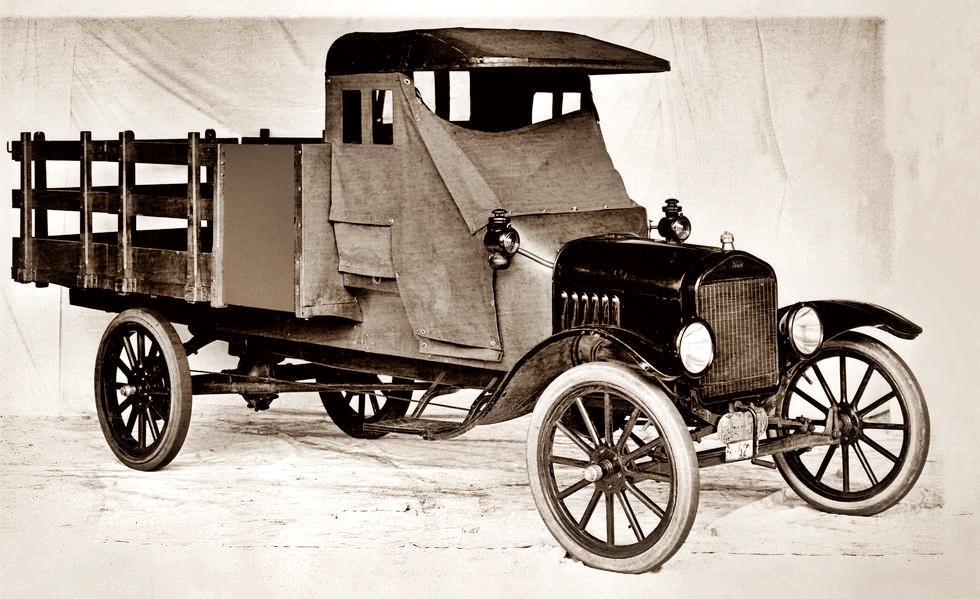
‘Serious capable, purpose-built tool’
Just over a hundred years later, as the electric era dawns, Ford will offer a fully-electric F-Series model which it says ‘will be a seriously capable, purpose-built tool for serious truck customers. Besides new technology, the electric F-150 Lightning (as it will be known) will also be able to serve as a mobile power generator. It will be able to supply electricity at campsites or construction sites, or even disaster-struck areas.
Prototypes have been undergoing tens of thousands of hours of torture testing and targeting millions of kilometres of driving – simulated, laboratory and real-world. The dual electric motor powertrain will deliver more horsepower and torque than any F-150 available today, which means faster acceleration than what F-Series owners have been used to.
Lower operating and running costs
F-Series truck powertrains typically have large displacements – even the smallest has been 2.7 litres – and that has obviously meant high fuel consumption. With the F-150 Lighting which offers higher performance, including strong towing capability, there will be no such consumption penalty at all. Furthermore, Ford claims that it will have the lowest expected lifetime total cost of operation among F-Series trucks with less maintenance than a typical petrol engine.
“Every so often, a new vehicle comes along that disrupts the status quo and changes the game… Model T, Mustang, Prius, Model 3. Now comes the F-150 Lightning,” said Ford President & CEO, Jim Farley. “America’s favourite vehicle for nearly half a century is going digital and fully electric. F-150 Lightning can power your home during an outage; it’s even quicker than the original F-150 Lightning performance truck; and it will constantly improve through over-the-air updates.”
The new F-150 Lightning will be unveiled at Ford World Headquarters in Dearborn on the night of May 19 (morning of May 20 in Malaysia) and the event will be broadcast live online.
An earlier Ford pick-up EV
While the F-150 Lightning is a significant new development, it is not Ford’s first electric pick-up. Back in the late 1990s, when the company had brief burst of EV activity, it engineered a Ranger to be powered by electric motors. The battery packs were initially heavy lead-acid types and then switched to nickel-metal hydride, and factory testing showed that a range of up to 132 kms was possible.
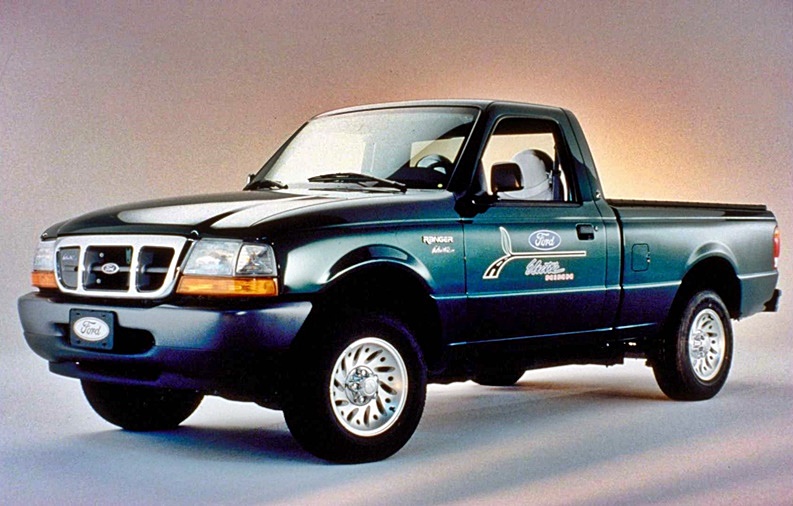
The Ranger EV was produced between 1998 and 2002 and was leased instead of sold. As interest in EVs faded, Ford didn’t make plans to follow up on the Ranger EV and instead focussed on developing EcoBoost technology for combustion engines.
To know more about today’s Ranger, visit www.sdacford.com.my.
Ford wins both 2021 Green Car of the Year and Green Truck of the Year Awards

After the Taycan, the next all-electric sportscar from Porsche will be the Macan. Developed with the usual secrecy, prototypes have been running around the proving grounds of the Porsche Development Centre and the next step is to take them into the outside world for road-testing.
Real-world testing on public roads and in a real-life environment are important stages in the development of a new model. In the case of the electric Macan, due to be launched in 2023, the testing will cover at least 3 million kms worldwide in varying conditions. This will add on to the experience gained from countless previous test kilometres – driven in a virtual space.
Digital development preserves resources
Digital development and testing not only saves time and costs but also preserves resources, so it enhances sustainability. Instead of real vehicles, the engineers use digital prototypes – computational models that replicate the properties, systems and power units of a vehicle to a high degree of accuracy.
There are 20 digital prototypes for the purpose of simulation in a number of development categories, such as aerodynamics, energy management, operation and acoustics. “We regularly collate the data from the various departments and use it to build up a complete, virtual vehicle that is as detailed as possible,” explained Andreas Huber, manager for digital prototypes at Porsche. This allows previously undiscovered design conflicts to be swiftly identified and resolved.
The aerodynamics specialists are among the first engineers to work with a digital prototype. “We started with a flow-around model when the project first started about 4 years ago,” explained Thomas Wiegand, Director of aerodynamics development.
Low aerodynamic drag is fundamental to the all-electric Macan with a view to ensuring a long range. Even minor flow enhancements can make a huge difference. The engineers are currently using simulations to fine-tune details such as the cooling air ducts. The calculations not only take into account different arrangements of the components, but they also reflect real-life temperature differences.
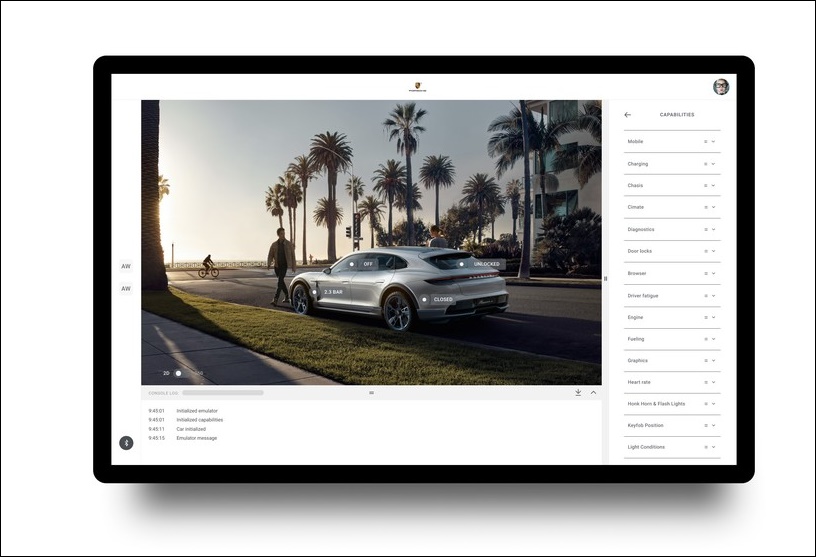
Virtual testing
New methods now allow very precise simulation of both aerodynamics and thermodynamics. “The digital world is indispensable to the development of the all-electric Macan,” said Wiegand. ”The electric drive system – from the battery through to the motor – requires a completely separate cooling and temperature control concept, one that is very different from that of a conventionally powered vehicle.”
While a temperature window of 90 to 120 degrees is the target for combustion engines, the electric motor, powertrain electronics and high-voltage battery require a range of between 20 and 70 degrees, depending on the component. The critical scenarios don’t occur on the road but can occur during fast high-power charging at high outside temperatures. However, the Porsche developers are able to precisely calculate and digitally optimise position, flow and temperature.
Virtual prototypes can be combined with real-world scenarios at an early stage. The best example here is the development of a completely new display and operating concept for the next generation of Macan. Using what is known as a seat box to recreate the driver’s environment, the display and operating concept can be brought to life in an early development phase in conjunction with the digital prototype.
“Simulation allows us to assess displays, operating procedures and the changing influences during a journey from the driver’s point of view,” explained Fabian Klausmann of the Driver Experience development department. “Here, the ‘test drivers’ are not just the specialists themselves but also non-experts. This allows all interaction between driver and vehicle to be studied down to the last detail, enabling selective optimisation even before the first physical cockpit has been built.”
To be the sportiest model in the segment
The first physical prototypes of the electric Macan were built using data obtained from the simulations – in some cases elaborately by hand or using special tools. These are then regularly adapted based on the virtual refinement process. By the same token, the findings from road testing are fed directly into digital development.
“Endurance testing on closed-off testing facilities and public roads in real-life conditions is still indispensable to ensure that the vehicle structure, operational stability and reliability of hardware, software and all functions meet our high quality standards,” said Member of the Executive Board Michael Steiner.
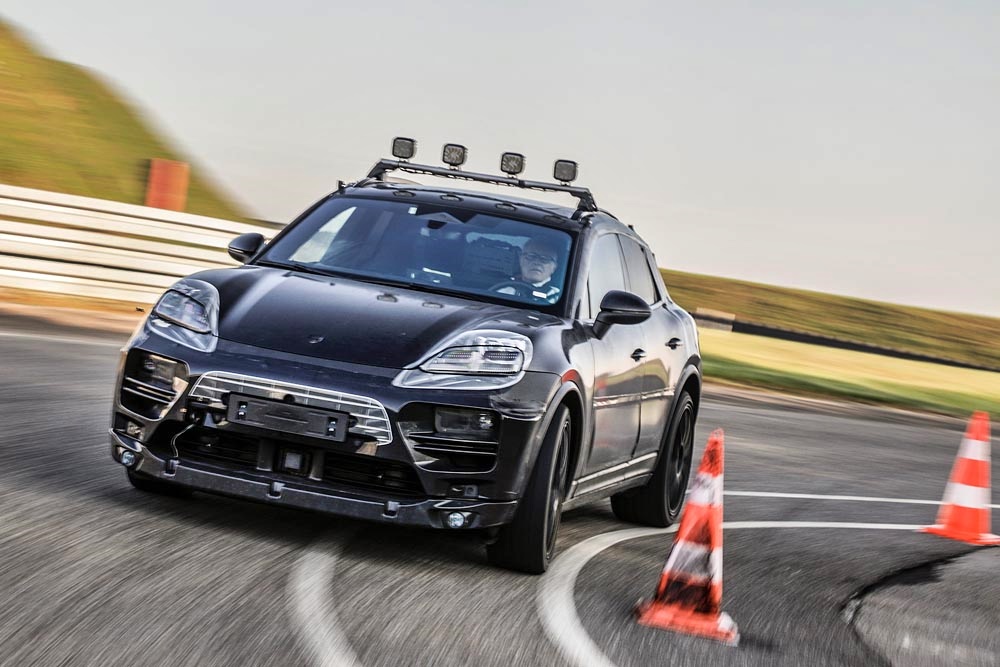
The demanding test programme for the electric Macan, carried out under the extremes of climatic and topographical conditions, includes disciplines such as the charging and conditioning of the high-voltage battery, which has to meet very rigorous standards.
“Like the Taycan, the all-electric Macan, with its 800-volt architecture, will offer typical Porsche E-Performance,” promised Steiner, citing development goals such as long-distance range, high-performance fast charging and reproducible best-in-class performance figures.
Combustion engine will still be offered
While Europe is accelerating into the era of pure electromobility with all-electric vehicles, Porsche understands that the pace of change will vary considerably across the world. In some regions, there will still be demand for vehicles with conventional combustion engines. Therefore, the next Macan will continue to have a variant with a combustion engine for markets which want it.
Entry-level Porsche Taycan available from March, priced from RM605,000

With the Hari Raya festive season on this month, Volkswagen Passenger Cars Malaysia (VPCM) is having a Raya-Raya campaign as well as an Aftersales Raya campaign, both of which will save money for those buying new Volkswagens as well as those who already own one.
Volkswagen Raya-Raya Campaign
Until May 31, 2021, purchasers of selected Volkswagen models will enjoy a RM1,000 duit raya rebate. The two variants of the Passat also come with additional RM3,500 savings when customers book online via the Volkswagen eShowroom. Additionally, those who purchase a new Passat Elegance will have 1-year comprehensive insurance free of charge, while the Passat R-Line comes with a year’s supply of free petrol.
Aftersales Raya Campaign
VPCM doesn’t forget loyal customers who have joined the Volkswagen family and with the Aftersales Raya campaign, owners who send in their vehicle for service at authorised dealerships will enjoy a 20% discount on Volkswagen genuine engine oil.
During the campaign period, which runs till June 13, 2021, owners who spend a minimum of RM1,200 will receive a complimentary carcare kit that consists of wax polish, wax shampoo, glass polish, plastic care, and leather care solutions, as well as complimentary Volkswagen Raya packets (both complimentary items available while stocks last).
A new addition to the Aftersales Raya campaign is the promotion for windscreen wiper blades, important items especially with the rainy weather these days. Just as you need good lighting at night, you also need good wiping of the glass for safe motoring. Until June 30, 2021, a pair of wiper blades from authorised service centres will be offered with a 20% discount.

New VIP insurance partner
VPCM has also announced a new insurance partner under the Volkswagen Insurance Plan (VIP). This is AXA Affin General Insurance Berhad which joins existing partners Allianz General Insurance Berhad, Etiqa General Takaful Berhad and Zurich Takaful General Insurance Berhad.
As a VIP policyholder, benefits include prioritised claim approval, roadside assistance with 24-hour emergency towing, and assurance that repair work is conducted at authorised Volkswagen Body & Paint centres in accordance with Volkswagen repair standards with only genuine parts used. Additionally, there are no excess fees, no betterment costs and an agreed insured value for vehicles up to 10 years old. This is applicable to all Volkswagen models regardless of vehicle age.
To know more about Volkswagen products and services, or to locate authorised service centres, visit www.volkswagen.com.my.
The Shell Eco-Marathon, one of the world’s leading student engineering competitions, has been running for the past 35 years and despite still not being able to get back on the track in 2021, the event continued to celebrate the innovation of student teams and their Off-Track submissions.
While adapting to the ‘new normal’, the Shell Eco-Marathon 2021 adopted a unique model that involves new and exciting virtual opportunities, all with the continued goal of addressing an age-old problem that focuses on improving vehicles’ efficiency to travel as far as possible using as little energy as possible.
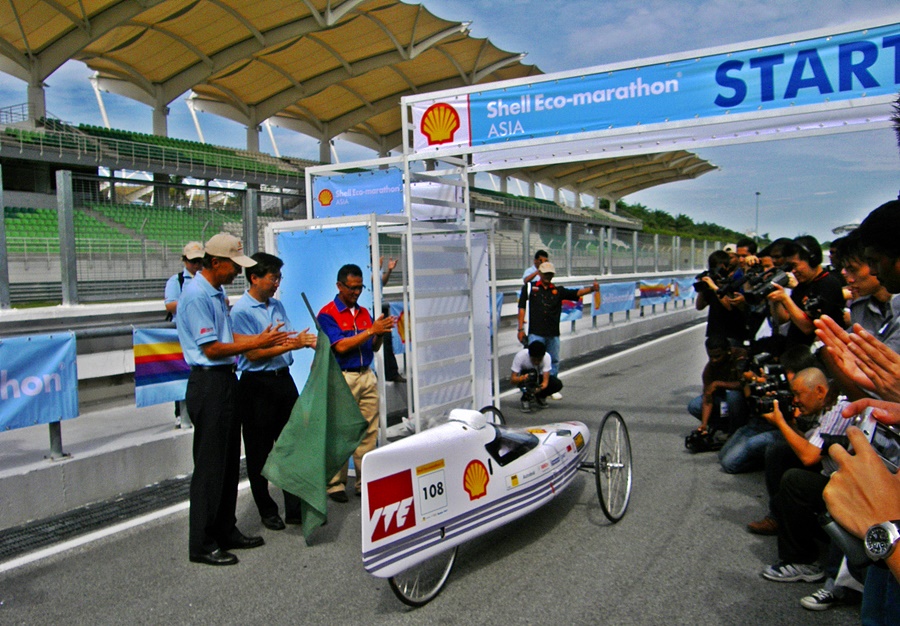
198 entries from 64 teams
This year’s Shell Eco-Marathon Virtual Off-Track Awards for Asia Pacific and the Middle East received a record number of submissions at 198 entries from 64 teams across 11 countries, nearly twice the number of submissions from past years. After shortlisting the best teams, a virtual panel used scorecards to select the winners and runners-up.
A new feature is the global Virtual League, enabling teams to accrue points across a range of different challenges including the Off-Track Awards and a brand-new Autonomous Programming Competition, which all feed into an ongoing league table.
Only Malaysian team
As with many other events these days, the winners were announced during a live virtual ceremony held recently. Team Grune Welt from MMU’s Faculty of Engineering and Technology in Melaka emerged as the only Malaysian team recognised at this year’s Shell Eco-Marathon Off-Track Awards for Asia and the Middle East.
The MMU Team’s Eco-V7 battery-electric prototype vehicle earned the judges’ recognition with its thoughtful sustainable design and other unique features. The team won US$750 and 100 Virtual League Points, propelling their current ranking to 10th in the Asia Pacific Region and 30th globally.
“The 2021 virtual programme is designed to recognise and reward the students’ achievements throughout the year. From virtual technical inspection to Off-Track Awards and global energy challenges like ‘Pitch the Future’, it aims to stretch and strengthen their STEM skills from start to finish,” said Norman Koch, Global General Manager, Shell Eco-Marathon. “While nothing can replace the excitement of the track, we hope that these virtual components will continue to provide opportunities to Shell Eco-Marathon teams throughout this season as we navigate these difficult times,” he added.
Keeping spirit of innovation alive
Over the years, the Shell Eco-Marathon has seen thousands of high school and university students from across the world build ultra-energy-efficient vehicles, in a variety of designs, using a spectrum of energy types. Every year brings new stories of human endeavour and technical excellence, as teams push the boundaries of what’s possible. Through the Shell Eco-Marathon, the spirit of innovation is kept alive among its student participants.
FEATURE – The German engine that was born on a Japanese bullet-train
♦ No incidents on the opening lap for a change but Lewis Hamilton lost his lead at the first corner to Max Verstappen, while Charles Leclerc slipped past Valtteri Bottas to take third place. Not a great start for the two Mercedes-AMG drivers.
♦ There was some puzzlement as Pierre Gasly seemed to have started in the wrong position, which the Stewards looked into. They later found that he had moved too soon at the start and gave him a 5-second penalty.
♦ Although Leclerc had gotten in front of Bottas, he could not run away and the Mercedes-AMG driver was cautious too. Meanwhile, Daniel Ricciardo and Sergio Perez ere getting closer to the front.
♦ On lap 9, Scuderia Alphatauri’s Yuki Tsunoda had to pull to the side of the track as his car seemed to lose power (it was later reported to be a fuel pressure issue). His parked position being hazardous brought the Safety Car out. The day before, the Japanese driver had made critical remarks about what he felt was difference in performance between his car and team mate Gasly’s – but later apologised to his team, saying he was frustrated by the way the car behaved.
♦ The Safety Car was only required for one lap and by lap 10, the race resumed, with Verstappen still ahead and trying to extend the gap from Hamilton again.
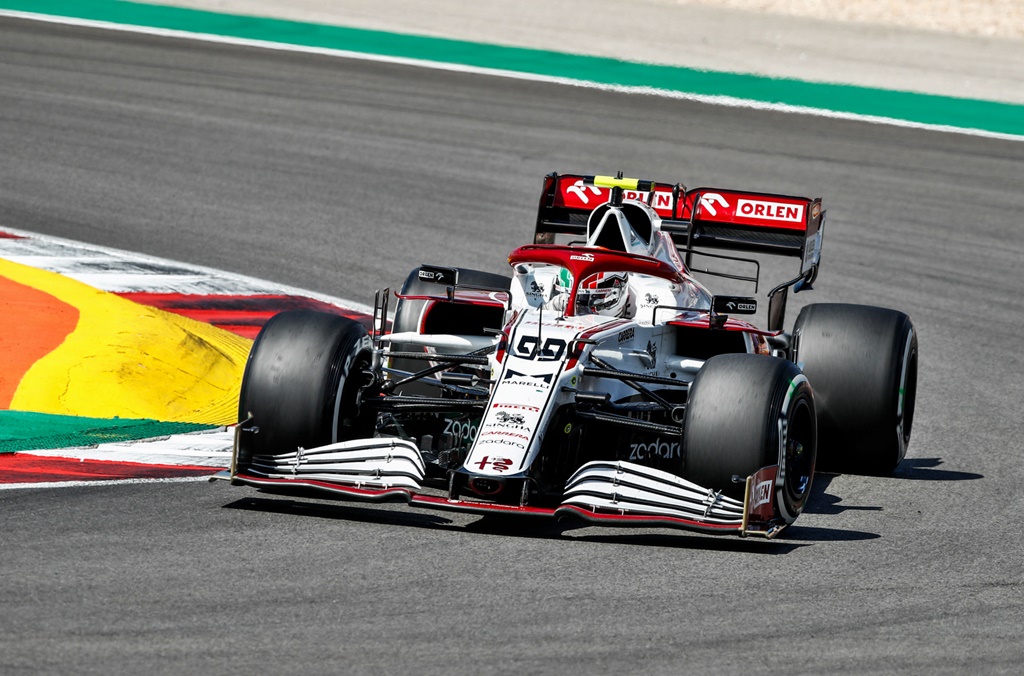
♦ While the Safety Car was on the track, Antonio Giovinazzi raced into the Alfa Romeo pits to get the tyres changed… but a delay saw him fuming for longer than necessary and when he rejoined, he had dropped all the way to the back.
♦ Lance Stroll was waiting to pounce on Fernando Alonso the moment the Safety Car moved off, and when he did so, he timed it perfectly and powered past the Spaniard on the outside of Turn 4 to take 10th position.
♦ Going to lap 20, Hamilton was still behind Verstappen but the gap was not changing much. However, the British driver had concerns about his tyres although he is well known at being able to manage them when things get tough.
♦ At the one-third mark – 22 laps – the watching began as the leaders waited to see who would head to the pits first. The Safety Car had made a one-stop strategy a realistic possibility but for Verstappen, the gap was still too small. Further back in the field, though, the rush to the pits started as one driver after another came in.
♦ Bottas came in on lap 24 and on the next lap, Verstappen decided to also come in and spent just 4.2 seconds getting the tyres changed. When he rejoined, he slotted into fifth, just behind team mate Perez. But it was only momentarily as Perez dutifully moved aside to let him start the chase. Hamilton, in spite of tyre concerns, decided to stay out a bit longer and see if he could get a good gap in the lead.
♦ Toto Wolff was unhappy seeing that Haas driver Nikita Mazepin making it difficult for Hamilton to get by. He informed the officials and asked for action to be taken to make sure the Russian driver did not cause unnecessary problems. When other drivers have complained about him, Mazepin has used his rookie ‘inexperience’ as an excuse.
♦ Hamilton was finally called in on lap 29 and a hard-charging Verstappen quickly took over the lead. The chase was on again for Hamilton, now with fresh tyres and a gap of 2 seconds to close. As an indication of his determination, he set the fastest lap as the race crossed the halfway point.
♦ At the other end of the field, Nicholas Latifi pushed Giovinazzi to make a mistake on lap 37 and swept by to take 16th position, just behind his Williams team mate Georg Russell. Sebastian Vettel and Alonso, both past world champions, were also engaged in a battle for 11th place.
♦ Ricciardo was trying whatever he could to prevent Perez from passing him and eventually, his weaving was noticeable and he received an official warning (via his team) to stop such driving tactics.
♦ On lap 43, Hamilton was asked to come in for a set of mediums which would be advantageous when the race entered its final stages. His position was taken by Bottas who kept the Red Bull in sight and when Hamilton got back, he was 22 seconds behind Verstappen. He was about a second quicker per lap than the Red Bull driver, and if he kept that pace, he would catch up by the last lap as 22 laps remained.
♦ By lap 48, Perez finally out-manoeuvered Ricciardo on the outside and grabbed fifth place, with Leclerc next on his list.
♦ On lap 53, Hamilton was trailing his team mate and ready to pass, but Bottas didn’t seem to want to give up his position readily. But he got called in for another set of tyres so Hamilton was able to see Verstappen right in his sights. The gap was around 10 seconds and the number of laps remaining in the race was 12.
♦ With 9 laps remaining, Bottas was in fourth but with fresh tyres, he would be able to displace Lerclerc (who had done only one tyre change) and get up on the podium. There was even the possibility of second place if the Red Bull tyres couldn’t last till the end.
♦ As the 60th lap started, Hamilton was slipstreaming Verstappen’s car and going into Turn 1, the Mercedes-AMG surged past on the outside and took the lead. Having dropped a place, the Red Bull team decided to bring him their car in for a new set of tyres, by which time the gap to Hamilton had stretched to 23 seconds. He therefore had to just keep ahead of Bottas who was about 11 seconds behind. The new tyres gave Verstappen to set a very fast lap so he could get that 1 extra point.
♦ Once again, it was Hamilton who took the chequered flag at the Spanish Grand Prix, the victory being his 98th in his 14 years of racing in F1. The top four finishers ended the race as they had started it, and Tsunoda was the only non-finisher.
Every Perodua model is selling well, with models like the Ativa having a long waiting list of customers. The carmaker could probably get away with not making changes or improving the products and the demand would still be there. However, adhering to the Japanese philosophy of kaizen passed on from their partner, Daihatsu Motor, Perodua constantly improves its products.
So, for the Aruz, Malaysia’s best-selling 7-seater SUV, updating has taken place – but without any price changes. The Aruz X is still RM68,526, while the Aruz AV remains at RM73,226, excluding insurance and with full sales tax exemption (until June 30, 2021).
Making products incrementally better
“With well over 60,000 units sold since its 2019 birth, the Perodua Aruz was already the nation’s best-selling SUV in 2019 and 2020, but, true to the principles of kaizen, we believe there are always ways we can make our products incrementally better,” said Dato’ Zainal Abidin Ahmad, President & CEO of Perodua.
“This incremental adaptation of the Aruz is in line with the Perodua Smart Build blueprint; another example of our symbiotic collaboration with our suppliers to customise our products to better suit Malaysian needs and wants, and through this, developing further the capabilities of our suppliers towards true self-reliance,” he said.
The improvements are in the form of additional features such as side steps below the door sills. With the extra ground clearance of the Aruz, the sill is a bit higher than in a passenger car so for some people, especially elderly folks or little ones, getting in and out may not be easy. The side steps will therefore help and make movement safer and more convenient.
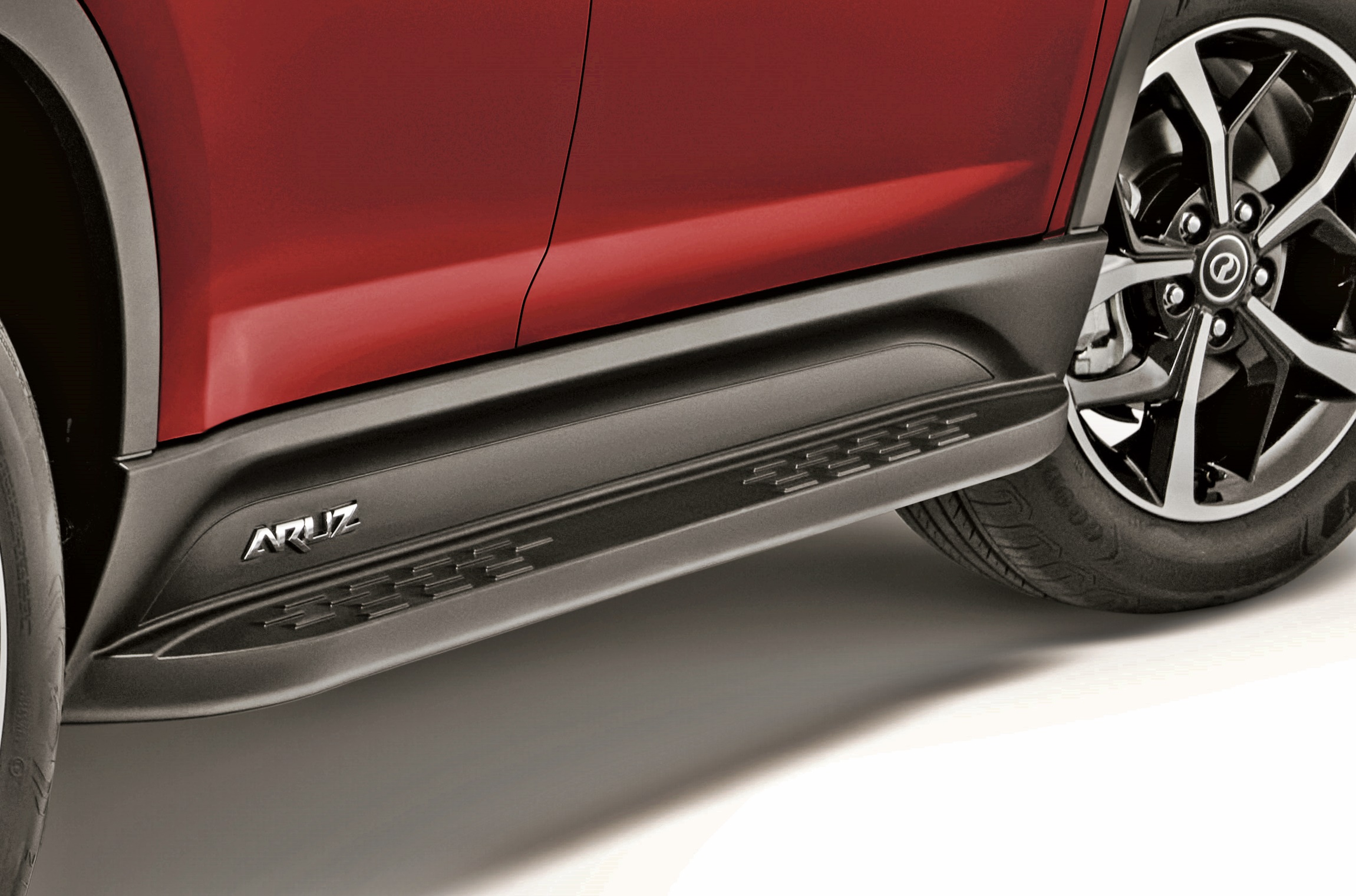
Added safety feature + new colour
An added safety feature for 2021 is automatic door-locking; when the vehicle’s speed exceeds 20 km/h, the doors will lock automatically. This is a safety precaution, especially for those who may forget to do so. In the event of a severe collision that sensors will detect, the locking system will automatically unlock all doors so that the occupants can get out or rescuers can open the doors to help extract them.
Those who like red cars will be happy to know that Perodua now offers this colour, known as Passion Red, exclusively for the Aruz AV. Other colours choices are Granite Grey, Electric Blue, Glittering Silver and Ivory White.
“Perodua expresses our gratitude to all our valued customers, whose feedback helped us tweak the Aruz to better satisfy the real needs and wants of the majority of Malaysians,” added Dato’ Zainal Abidin Ahmad.
Technical specs remain the same
Other specifications and features remain the same, with the continued use of the all-aluminium 1.5-litre Dual VVT-i engine and an electronically-controlled automatic transmission. With Eco Idle activated, the fuel consumption can be as good as 15.6 kms/litre, it is claimed.
The Aruz is also tops in safety as it has the maximum 5-star ASEAN NCAP rating. Six airbags and Vehicle Stability Control are standard, and the AV variant has Advanced Safety Assist (ASA) 2.0 to help the driver avoid accidents.
To locate a showroom to check out the Aruz and other Perodua models, visit www.perodua.com.my.
© Copyright – Piston.my 2024 Trademarks belong to their respective owners. All rights reserved